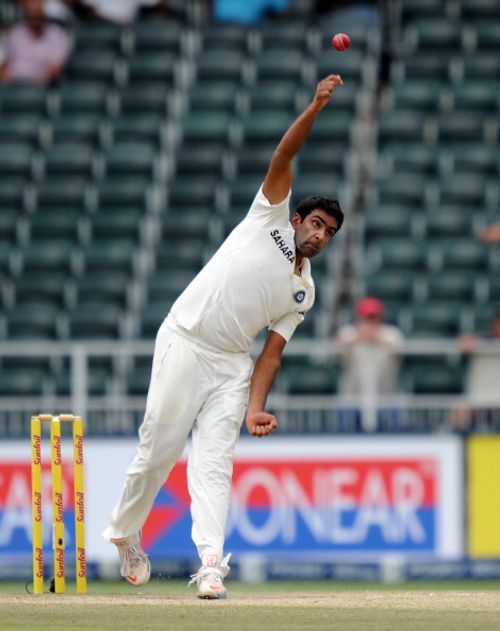
Is Ravichandran Ashwin a burden on Team India outside Asia?

Ravichandran Ashwin – not so deadly outside Asia
Just last month against West Indies, Ravichandran Ashwin became the fastest bowler in over 80 years to reach 100 Test wickets, doing so in only 18 Tests, and hence becoming the fastest Indian and the 5th fastest international bowler to reach the landmark.
But is this feat an illusion?
It’s important to note that out of the 19 odd Test matches that Ashwin has played, 15 have been played in India. And we all know how heavily skewed the conditions are in favour of the spinners in India, ranging from rank turners to the tropical weather conditions.
Before the first Test against South Africa at Johannesburg, Ashwin last played outside India against Australia at Adelaide in 2012. In that series, he picked up 9 wickets in the 3 Test matches he played at Melbourne, Sydney and Adelaide respectively.
His performances in India have been outstanding, no doubt about that. But his mediocre performance against South Africa in the first Test has made many a fan question his effectiveness outside Asia. And not just the Tests, but in ODIs as well. Here are his stats in the ODI series against the Proteas:
First ODI, Johannesburg: 10 – 0 – 58 – 0
Second ODI, Durban: 9 – 0 – 48 – 1
Third ODI, Centurion: 9 – 0 – 63 – 0
Going at 6.03 runs per over and averaging 169 runs per wicket aren’t the sort of figures a captain expects from his best spinner. In the ODIs, renowned experts like Sunil Gavaskar and Harsha Bhogle have criticized him, citing that having so many tricks and varieties up his sleeve, Ashwin tries to do too much, be it his popular ‘pause delivery’ or the slight change in bowling action.
When playing outside Asia, the onus to pick up wickets is on the fast bowlers. But that doesn’t mean the spinner can tend to relax. His job is to build just enough pressure on his end so that the batsman tries to take that odd chance either against him or the pacers and falters in the process. Once a fast bowler has completed his spell and requires some rest, the spinner should bowl well and continue to apply the pressure built by the former, instead of releasing it.
This was lacking in the second innings of the recently concluded first Test vs South Africa, and skipper Dhoni was seen resorting to part timer Virat Kohli instead. Not surprisingly, Ashwin went wicketless in the match, giving away 108 runs in his 42 overs. Moreover, he averages 74 and has a strike rate of 140 in away Tests.
Anil Kumble, the third highest wicket taker (619) in Tests, was the hero of most of India’s success in Tests outside Asia. He was a skiddy customer. His constant variations in speed and length accounted for most of his wickets. That’s why leg before wicket (LBWs) contributed immensely to his success. As a spinner who didn’t rely much on turn, the conditions outside Asia didn’t really hamper his bowling.
Ravindra Jadeja is very similar to Anil Kumble in his approach. He also bowls wicket to wicket, is a skiddy customer and traps batsmen in front of the stumps frequently. His variations are superb and he also uses the arm-ball really well.
But he has been largely branded as an ODI spinner, though his Test record suggests otherwise. He picked up 24 wickets against Australia, playing a major role in the whitewash earlier this year. He also dismissed the Aussie captain Michael Clarke five times in the series. Clarke is regarded as one of the best players of spin in world cricket at the moment.
For skipper Dhoni, it wouldn’t be a bad idea to try Jadeja out in the second Test over Ashwin.